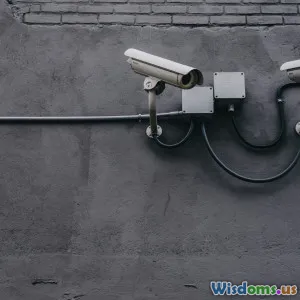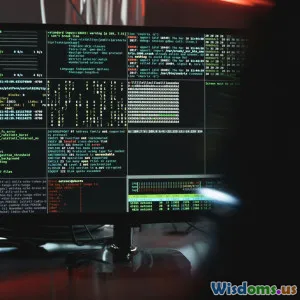
What Happens When Vulnerability Scanning Tools Miss Critical Flaws
8 min read Explore the serious consequences when vulnerability scanners fail to detect critical flaws, and learn how organizations can strengthen their cybersecurity posture. (0 Reviews)
What Happens When Vulnerability Scanning Tools Miss Critical Flaws
In our hyperconnected and digital-driven world, cybersecurity stands as the cornerstone of organizational protection against myriad threats. At the heart of this is the use of vulnerability scanning tools—automated systems designed to comb through software, networks, and infrastructure to identify existing weaknesses that attackers might exploit. These tools help companies patch holes before they escalate into breaches. But what happens when these scanning tools fail to detect critical vulnerabilities?
Let’s explore why scanning tools sometimes miss vital security flaws, examine the consequences of these blind spots, and identify practical steps organizations can take to safeguard their digital assets.
Understanding the Role of Vulnerability Scanning Tools
At a fundamental level, vulnerability scanners automate the detection of known security weaknesses within digital environments. They leverage vulnerability databases—such as the Common Vulnerabilities and Exposures (CVE) system—and various detection techniques to flag potential security holes.
Examples of widely used scanning tools include:
- Nessus: Known for extensive plugin databases and detailed reporting
- Qualys: Cloud-based platform with strong asset discovery
- OpenVAS: Open source scanner with frequent updates
Despite continuous improvements, no vulnerability scanner is perfect. Tools have limitations rooted in signature reliance, heuristics, update cadences, and environmental factors influencing detection accuracy.
Why Critical Flaws Are Sometimes Missed
1. Zero-Day Vulnerabilities and Emerging Threats
One of the primary challenges is zero-day vulnerabilities—security flaws unknown to the public and security vendors. Scanners rely on existing databases that catalog known vulnerabilities. Since zero-days have no published signature or patch, scanners simply can’t identify them until they are documented.
2. Incomplete or Incorrect Configuration
Improper setup of scanning tools limits their effectiveness. For example, not scanning all network segments, neglecting certain protocols, or missing authenticated scans (that require credentials to probe deeper) can cause overlooked flaws.
3. Complex and Layered Systems
Modern IT systems are often layered, with cloud services, containerization, microservices, and legacy components working in tandem. Scanners may not fully understand such environments or may lack proper integrations, leading to gaps in detection.
4. False Negatives and Tool Limitations
False negatives occur when a vulnerability exists but the tool fails to detect it due to heuristic limitations, lack of appropriate test cases, or evasion techniques employed by attackers.
5. Lag Between Patch Release and Scanner Updates
When new vulnerabilities emerge, there can be a time lag before scanners integrate their detection routines. During this window, vulnerabilities go undetected even though patches might be available.
The Cost of Overlooking Critical Vulnerabilities
1. Real-World Examples of Disaster
- Equifax Breach (2017): The massive data breach exposing 147 million records began with an unpatched vulnerability in Apache Struts—one of the most cited examples of missed critical flaws.
- Capital One Hack (2019): Exploited a misconfigured firewall and server-side flaw involving AWS infrastructure, showing how nuanced misses in scanning and configuration cause breach opportunities.
2. Financial Implications
Cybersecurity Ventures predicts cybercrime damages will cost $10.5 trillion annually by 2025. Missed flaws increase breach risk, leading to regulatory fines, legal costs, incident response expenditures, and loss of revenue.
3. Erosion of Customer Trust and Brand Reputation
Customers expect firms to safeguard their data. Breaches caused by overlooked vulnerabilities lead to public distrust, long-term brand damage, and user attrition.
4. Operational Disruption
Successful exploitation of missed flaws often results in operational downtime, data loss, or ransom demands via ransomware attacks that can cripple organizations.
Strengthening Defenses Beyond Basic Scanning
While no single tool can guarantee total vulnerability coverage, organizations can adopt a multilayered approach to minimize the risk of oversight.
1. Continuous and Credentialed Scanning
Scanning should be continuous, not periodic, providing up-to-date intelligence. Credentialed scans with access to systems can uncover flaws that external scans miss.
2. Use of Multiple Scanning Tools
Diversity of tools sometimes identifies unique findings. Combining commercial scanners with open source or specialized tools helps uncover more vulnerabilities.
3. Regular Patch Management and Threat Intelligence Integration
Automating patch application reduces risks. Integrating threat intelligence feeds helps prioritize vulnerabilities actively exploited in the wild.
4. Penetration Testing and Manual Reviews
Human-led penetration testing explores beyond automated scans, mimicking attacker creativity. Manual code reviews and configuration audits fill gaps that scanners ignore.
5. Security Training and Awareness
Educated security teams better interpret scan results, calibrate tools, and remain aware of emerging threat landscapes.
6. Deploying Advanced Detection Technologies
Complement vulnerability scanning with runtime application self-protection (RASP), and behavior-based anomaly detection to capture exploitation attempts despite missed flaws.
Looking Ahead: The Future of Vulnerability Detection
Artificial intelligence and machine learning show promise in enhancing vulnerability detection by recognizing novel patterns and accelerating signature creation. Additionally, increased cloud provider sophistication and security integrations aim to minimize blind spots inherent in distributed architectures.
However, the cat-and-mouse game with attackers ensures that vigilance, adaptability, and layered security remain imperative.
Conclusion
Vulnerability scanning tools are indispensable, but their blind spots can have grave consequences when critical flaws go undetected. Real-world breaches evidence the costly human and financial toll of such misses. Organizations must recognize the limitations of automated scanning, complementing these tools with robust strategies encompassing configuration management, continuous monitoring, human expertise, and advanced detection methods.
Understanding the gaps and innovating ways to bridge them helps build resilience in an ever-evolving cyber threat landscape. Only through this comprehensive approach can businesses truly protect their critical assets and sustain trust in an increasingly hostile digital world.
Takeaway: Vigilance beyond automated scanning with layered defenses is pivotal. Don’t let missed critical flaws be your organization’s weakest link.
Rate the Post
User Reviews
Popular Posts



















